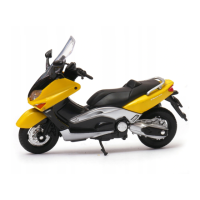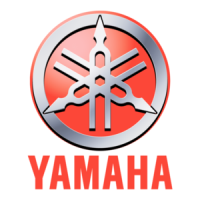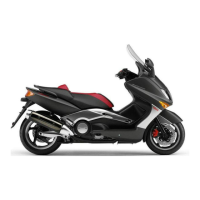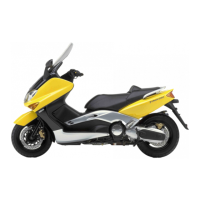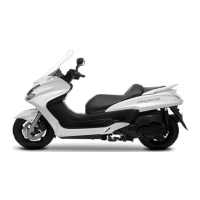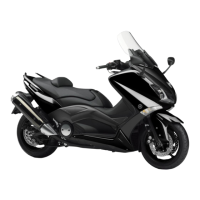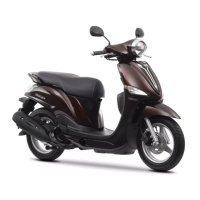CHASSIS
3-29
EAS21530
CHECKING THE FRONT FORK
1. Stand the vehicle on a level surface.
WARNING
EWA13120
Securely support the vehicle so that there is
no danger of it falling over.
2. Check:
● Inner tube
Damage/scratches → Replace.
● Oil seal
Oil leakage → Replace.
3. Hold the vehicle upright and apply the front
brake.
4. Check:
● Front fork operation
Push down hard on the handlebar several
times and check if the front fork rebounds
smoothly.
Rough movement → Repair.
Refer to “FRONT FORK” on page 4-57.
EAS21650
CHECKING THE TIRES
The following procedure applies to both of the
tires.
1. Check:
● Tire pressure
Out of specification → Regulate.
WARNING
EWA13180
● The tire pressure should only be checked
and regulated when the tire temperature
equals the ambient air temperature.
● The tire pressure and the suspension must
be adjusted according to the total weight
(including cargo, rider, passenger and ac-
cessories) and the anticipated riding
speed.
● Operation of an overloaded vehicle could
cause tire damage, an accident or an injury.
NEVER OVERLOAD THE VEHICLE.
*Total weight of rider, passenger, cargo and ac-
cessories
WARNING
EWA13190
It is dangerous to ride with a worn-out tire.
When the tire tread reaches the wear limit, re-
place the tire immediately.
2. Check:
● Tire surfaces
Damage/wear → Replace the tire.
Tire air pressure (measured on
cold tires)
Loading condition
0–90 kg (0–198 lb)
Front
225 kPa (33 psi) (2.25 kgf/cm
2
)
(2.25 bar)
Rear
250 kPa (36 psi) (2.50 kgf/cm
2
)
(2.50 bar)
Loading condition
XP500 90–188 kg (198–414 lb)
XP500A 90–183 kg (198–403 lb)
XP500W 90–190 kg (198–419 lb)
Front
225 kPa (33 psi) (2.25 kgf/cm
2
)
(2.25 bar)
Rear
280 kPa (41 psi) (2.80 kgf/cm
2
)
(2.80 bar)
Maximum load
XP500 188 kg (414 lb)
XP500A 183 kg (403 lb)
XP500W 190 kg (419 lb)
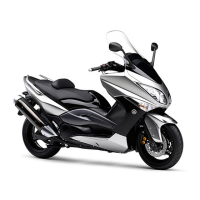
